9 Costly Loyalty Program Mistakes (and how to avoid them)
It’s no secret that loyalty programs are an effective way for businesses in the digital economy to accelerate growth and boost profit.
The presence of a loyalty program alone influences the buying decisions for at least 69% of shoppers.
But too many companies make shortsighted assumptions about their customers, finances, and program structure that end up hurting their bottom line and disappointing customers.
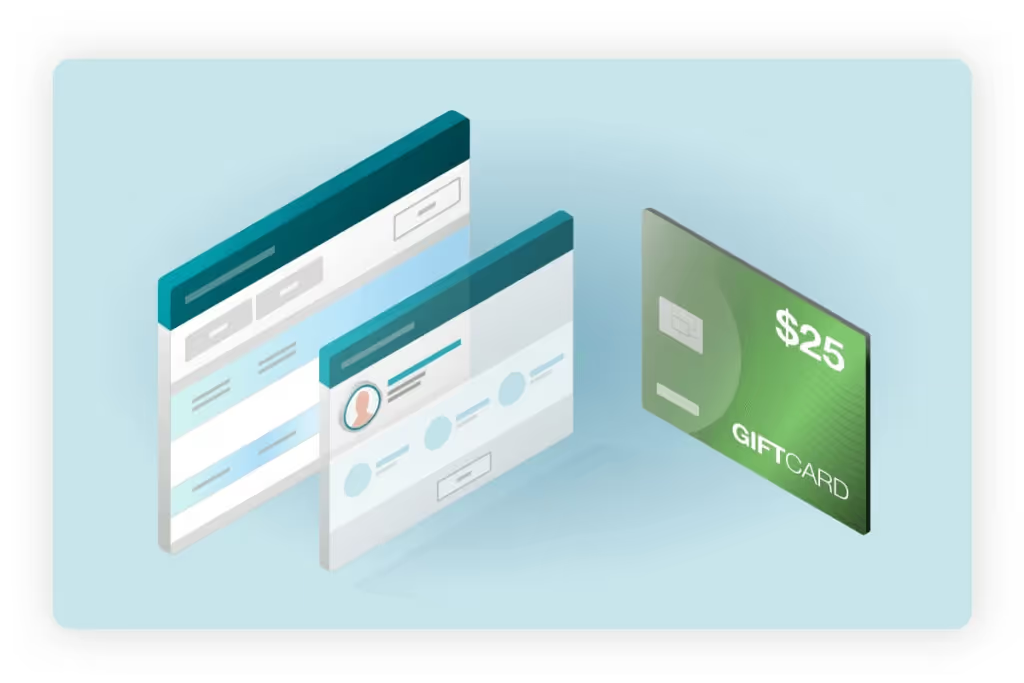
As you’ll learn here, even companies like Airbnb, Microsoft and Tesla have stumbled with the execution of their loyalty programs. But it’s all about learning, making the necessary adjustments, and trying again.
In this article, we’ll help you address the 9 most common loyalty program mistakes that can mean the difference between attracting and deterring customers.
Whether you’re designing your very first loyalty program, or your existing one isn’t driving the results you hoped for, make sure you steer clear of these critical blunders.
1 - Your rewards are inadequate
There’s no denying that rewards will either make or break your loyalty program. If your rewards don’t incentivize customer behavior, they’re useless.
Whether you’re trying to motivate customers to make a purchase, refer a friend, or re-activate a subscription, the “best” rewards are defined as ones that your customers actually want.
This means your primary criteria when choosing rewards should be your customers’ wants and needs. Too many companies select rewards solely based on factors like convenience, price, or availability, which is more likely to result in customer disappointment than delight.
An example of reward dissatisfaction was clearly expressed by gamers enrolled in Microsoft’s Xbox Live Rewards program that gifted members the point equivalent of $0.25 on their birthday:
Xbox Live Rewards just sent me 20 Microsoft points as a "birthday gift." That's $.25.
— Matt Clark🌹 (@ClarkMatt) March 5, 2013
If $0.25 was really the most value Microsoft could offer to remain financially stable, they would have been better off rewarding users with in-app features or free trials that are of little cost to the company, but highly valuable to gamers.
But just like how cheap rewards won’t excite customers, the most valuable rewards aren’t always the most expensive. There are plenty of alternative currencies you can leverage that go beyond traditional cash and points, and may help you repurpose an otherwise sunk cost.
If you’re stuck on choosing the best rewards, check out Part 1 of our series all about choosing the best rewards.
For those in the B2B space, check out what rewards will perform best when selling to other companies.
2 - You’re not promoting your program
Believing your loyalty program will promote itself is a common and dangerous misconception.
Even global giant Airbnb cites a lack of promotion as one of their early referral program’s biggest problems – not even their employees knew it existed.
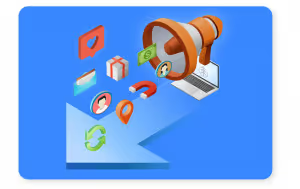 If your loyalty program isn’t driving the engagement you hoped for, the problem might be that no one knows it exists.
If your loyalty program isn’t driving the engagement you hoped for, the problem might be that no one knows it exists.
Given the plethora of popups, images, and flashing words that web visitors encounter on every page, people are only going to notice the things that are purposefully promoted.
As a digital business, you have an advantage with plenty of channels and areas to leverage like your website, app, email campaigns, invoice notes, social media posts, and email signatures.
We get that you might be nervous about over-promoting your program, so we made a checklist with 7 loyalty program promotion strategies that will help you spread the word without being annoying.
3 - Your program is too complicated
If users have to navigate through multiple levels of your website, fill out several forms and analyze a confusing flowchart just to participate in your loyalty program, they'll abandon the process and take their business elsewhere.
One of the worst things you can do is make customers do math to figure out their reward balances. Your customers are signing up to receive perks - not take the SAT exam.
Start by deciding what user information is most important for you to collect during enrolment, and present customers with clear CTAs and instructions for how to collect, redeem, and review their rewards.
Members of your program should be able to easily explain the concept to their friends and family without needing to reference detailed diagrams.
The most successful loyalty programs are characterized by simplicity and ease of use. A dedicated explainer page on your website should be sufficient to outline any extra details.
An email from ride-sharing app Lyft clearly states that a passenger needs 5 rides to receive a $5 credit. Within the app, a user can see how close/far they are from their next 5-ride milestone.
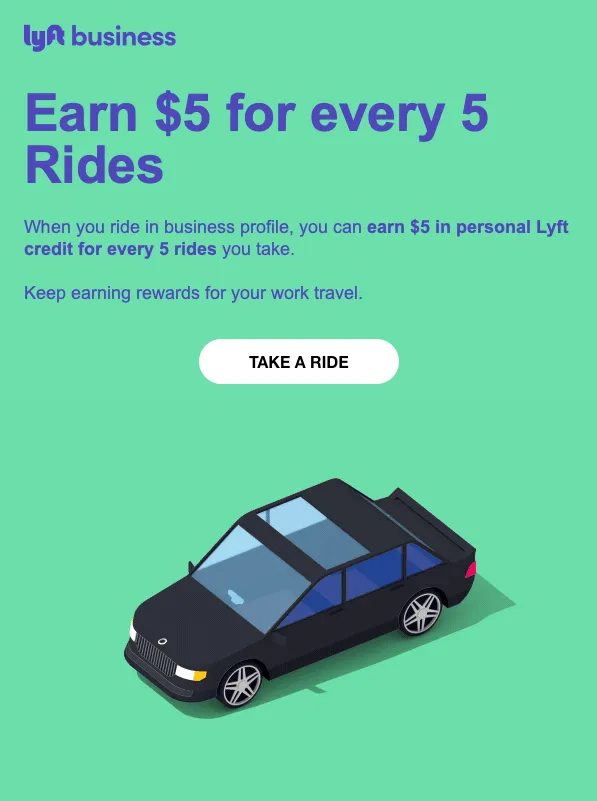
4 - You don’t know how much it’s costing you
One of the most costly mistakes you can make is not fully understanding your loyalty program’s ROI (return on investment).
This is your indication as to whether your investment in a loyalty program (reward costs, software fees, promotional expenses, etc.) is paying off against the sales and new customers that it brings in.
A loyalty program done right will more than make up for the implementation and maintenance costs, though you need to make sure your proposed strategy is sustainable given your current business model and financial health.
Even the big guys forget to do this, or don’t do it properly: Tesla ran a referral program that offered six months of free Supercharging to new buyers, while the referring user became eligible for various prizes based on their amount of referrals.
The program eventually ended, with Elon Musk citing that it was adding too much costs to the cars and cutting into the company’s margins.
Yes, ending on Feb 1. It’s adding too much cost to the cars, especially Model 3.
— Elon Musk (@elonmusk) January 17, 2019
Tesla learned from their mistakes and unveiled a restructured referral program weeks later, with the intention of “[saving] the company money while also offering rewards that are super exclusive.” (source)
A marginal incentive amount (like Microsoft’s $0.25 birthday reward) keeps your profit high but makes your customers feel unappreciated, while high-value rewards (like Tesla’s) may quickly drive sales but eventually hurt your bottom line.
Properly calculating your ROI helps you hit the sweet spot.
Check out our step-by-step guide on how to calculate the ROI of your acquisition rewards and learn how much you can afford to offer.
5 - You’re only focusing on customers at one point in the lifecycle
A loyalty program has a place at every point in the customer lifecycle - from acquisition to retention, win-back and referral.
But many companies focus their marketing efforts too heavily on area of the lifecycle, failing to realize the revenue from other segments.
For example, 44% of companies admit to having a greater focus on customer acquisition than retention. Only 40% of companies claim to have an equal focus on both. (source)
Focusing too heavily on acquisition-based growth can be deceivingly expensive: it costs five times as much to attract a new customer than to keep an existing one.
Plus, you have a 60-70% chance of success when selling to an existing customer. This chance of success goes down to 5-20% when targeting a brand new customer. (source)
To even out your areas of focus, check out how a loyalty program can help your digital business every step of the way.
6 - You’re too focused on corporate goals
Many customers abandon a loyalty program because they feel the relationship is one-sided, and there’s nothing in it for them.
Incentive-based loyalty programs only work as a mutually-beneficial agreement: Customers receive rewards for making a purchase, and the company benefits from the added revenue.
As a company, if you can’t articulate the value you’re providing to clients, you’re missing the whole point.
Whether you developed a loyalty strategy to help boost sales, increase customer lifetime value, or expand your product reach, being too focused on your own needs will eventually deter customers.
The average consumer belongs to 13 loyalty programs, but is only active in half of them. Being cheap with your incentives or setting strict reward redemption/expiry rules purely to boost your own profit is a recipe for high abandonment rates.
7 - You’re not intentional about the customer behaviour you reward
As a digital marketer, your key goal is to turn one-time buyers into returning loyal customers.
This is done by successfully moving users through each stage of the journey, from acquisition all the way to revenue and referrals – ie. moving users “through the funnel”.
The speed and success with which a user moves through the funnel is heavily shaped by the customer actions that you incentivize (ie. make a referral, download the app, sign up for the newsletter).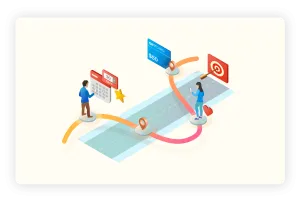
But rewarding the same general behaviour for each user in the lifecycle is not going to help you drive brand loyalty.
Instead, you need to draw on different customer characteristics at each phase of the lifecycle and be strategic about the actions you incentivize to propel them to the next stage.
For example, a user who just came across your website is not someone you want to encourage to make a referral, because your best advocates are those who are knowledgeable about your brand.
Similarly, you’re better off incentivizing a long-time client to leave a review than to complete an in-app tutorial, as their loyalty is an extremely valuable tool for referring new business.
Check out our guide for more examples of the best customer behavior to reward at each stage in the lifecycle.
8 - You’re treating all customers the same
While you should treat every customer with the same level of respect, offering the same rewards to your best and worst customers doesn’t help your top tier feel like their loyalty is appreciated.
Given that your loyal top 10% of customers spend almost 3x more per transaction than the lower 90% of customers, you should be making an effort to retain them with quality incentives.
How would you feel if you made 10 purchases with a brand in one month, and received the exact same thank-you gift as your friend who made one purchase two years ago?
Loyal customers are worth up to 10x as much as their first purchase, so losing a VIP is much more costly than losing an average customer.
Brands who implement a tiered VIP rewards program understand their best customers are also their most valuable, and reward them accordingly with access to exclusive perks.
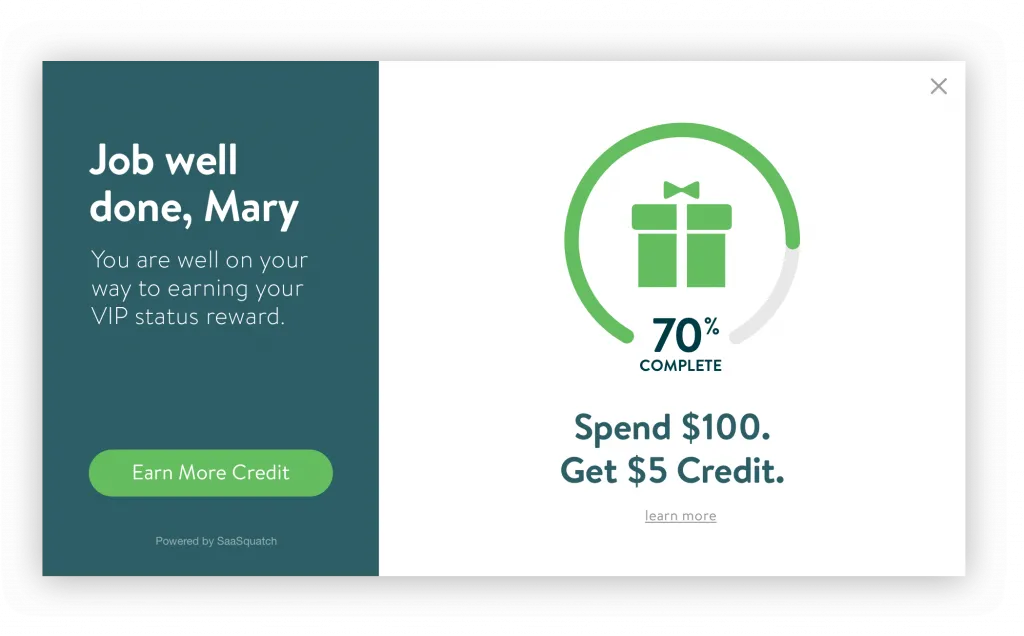
Remember that VIP rewards don’t need to be more expensive. Offering early access to sales and new products will cost you nothing, while the perceived value is high.
Learn what a VIP Program can do for your digital business.
9 - You aren’t doing anything with the data you collect
Failing to analyze your program’s data means critical flaws could go unnoticed, and you’ll miss a major opportunity to capitalize on customer behaviour.
For example, your data might clearly reveal that customers are rarely making an effort to reach your highest VIP tier. Maybe the task is too demanding, or the reward is not desirable enough to warrant the effort.
Alternatively, you might notice that users tend to redeem their rewards on Thursdays and Fridays. In this case, you can further drive engagement by reaching out to customers on these days with flash sales.
Access to your program’s data lets you continuously test and optimize your incentive strategy and experiment with variables like reward value, email copy, and timing to establish a formula with optimal conversion rates.
Some basic metrics include conversion rates for your acquisition and referral strategies, reactivation rates for win-back programs, and customer spend rates for retention programs.
Data helps you paint a clear picture of your customer lifecycle, and what motivates users to move through the funnel and become loyal brand advocates.
Unless you managed to perfectly align all aspects of your strategy the first time around, you’ll need to review and adjust once your program is launched.
Final Thoughts
While the “perfect” loyalty program may not exist, companies need to do the best they can given their available resources to design a program with the highest chances of success.
Remember that the whole point of a loyalty program is to provide added value to your customers. When done properly, customers will reward your business with loyal behavior.
By understanding these 9 most costly oversights, you can build an incentive-based loyalty program that positively transforms your digital business.
To learn more about designing a successful loyalty strategy in the digital economy, sign up for the Digital Loyalty Academy today. Free access for the first 700 students.
